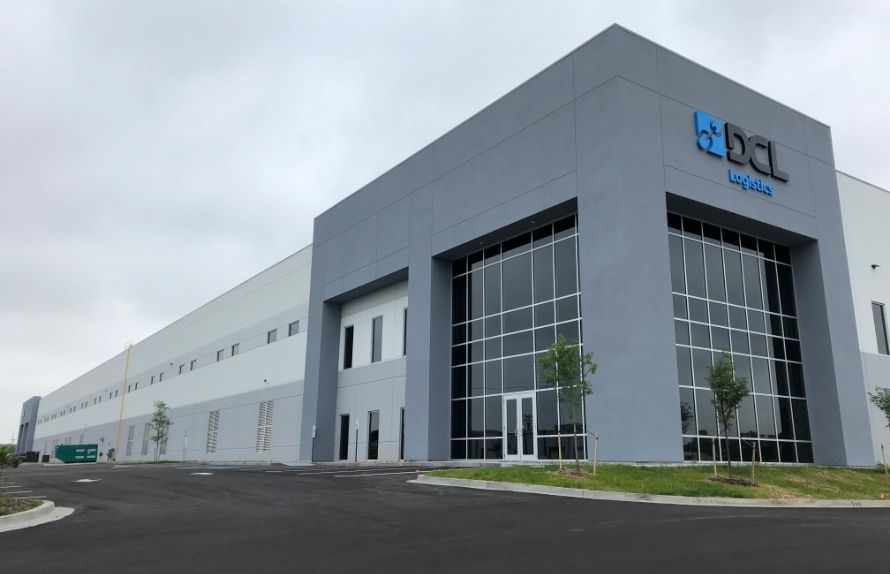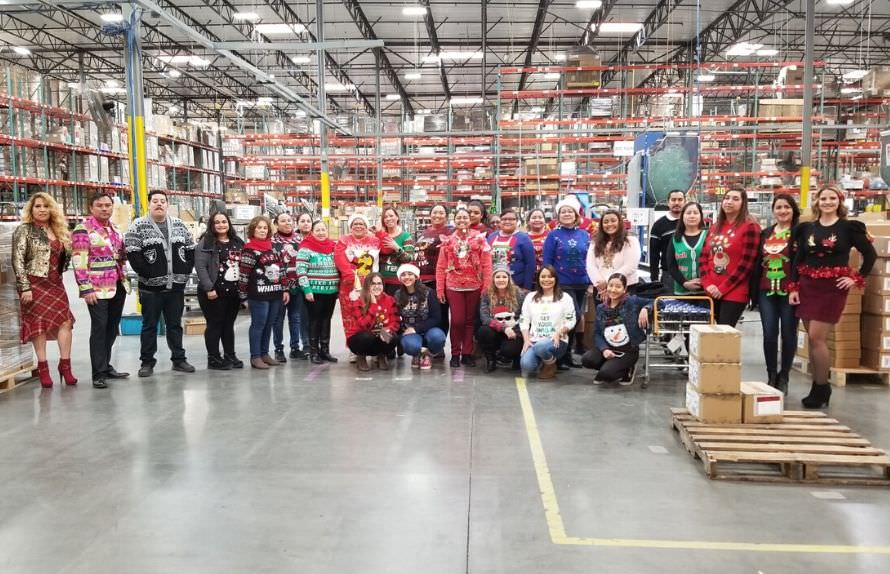
After pausing the Amazon SFP program for the last few years, Amazon announced that they are reopening enrollment. Qualifications and operational requirements have yet to be released as of June 2023.
What is Amazon Seller Fulfilled Prime (SFP)?
When DCL Logistics was founded 41 years ago, no one here could have predicted that commerce would be singularly dominated by a trillion dollar ecommerce storefront: Amazon.
Fulfillment by Amazon (FBA) and Amazon Merchant Fulfilled Network (MFN) have been the go-to fulfillment options for sellers on Amazon for over a decade. However, since being introduced in 2015, Amazon’s Seller Fulfilled Prime (SFP) program, has grown in popularity as a way to reach Amazon’s Prime Members which have ballooned to over 100 million members while providing more flexibility to the Amazon sellers. If you want to learn more about FBA and MFN, check out our article on Amazon’s fulfillment options.
Seller Fulfilled Prime allows the Amazon seller to list their products as Prime-eligible and ship their products to their customers directly via their own warehouse or from a qualified third party logistics company (3PL). Sellers can display the Amazon Prime badge on the products they ship directly to the customers with two-day shipping and free standard shipping.
Like Amazon FBA, Amazon SFP gives the Amazon seller the best chance to “win” the coveted Amazon buy box—meaning, the Amazon seller will be the first option when shoppers are looking at buying the type of product they sell. Non-prime sellers have a lower priority compared to Amazon Prime sellers and non-prime sellers are often filtered out by shoppers.
With almost all of DCL’s customers participating in FBA, we’re constantly thinking of ways to support and enhance their experience with Amazon. Also, we acknowledge that FBA has a different set of challenges which we’ve covered in the Amazon 3PL Trap article. Based on our customers’ feedback, one of those ways was to support Seller Fulfilled Prime—so, that’s what we did. We worked diligently to integrate with Amazon SFP and are now prepared to help you ship via SFP out of DCL warehouses providing you with greater flexibility and an option beyond FBA and MFN. Here’s a short summary of the program and how it could potentially benefit you.
If you are curious to learn more, please reach out to your DCL representative to get started.
Unless the seller is already part of the SFP program, the seller needs to apply on the Seller Central Amazon site. Amazon has not provided any information on how long the application process takes.

How to Qualify for Seller Fulfilled Prime
One of Amazon’s top priorities is to ensure that their Amazon Prime Members receive the white-glove treatment when buying and receiving products, so they have strict requirements for sellers to qualify for the SFP program. Here are some of the basic qualifications for the seller or their 3PL.
Eligibility
In order to qualify for SFP you must also fulfill the requirements for the Premium Shipping Program. These are most commonly tied to 2-day shipping which is the primary shipping option chosen by Amazon Prime members. The 30-day eligibility requirements for Premium Shipping are:
- An on-time delivery rate of at least 92% for Premium Shipping orders
- A valid tracking ID for at least 94% of Premium Shipping orders
- A cancellation rate of less than 1.5% for Premium Shipping orders
Trial Period
Eligible Amazon sellers or their 3PL are required to go through a SFP trial period and meet the following requirements on a minimum of 50 Amazon Prime trial orders.
- On-time shipment rate of at least 99% for Prime Orders
- Use of Buy Shipping Services for at least 98% of Prime orders
- Cancellation rate of 0.5% or less of pre-fulfilled Prime orders
Terms and Policies
As noted in the SFP program terms page, you must follow these policies to maintain your SFP status:
Buy all shipping labels for orders with a Prime item through Amazon’s Buy Shipping services
Direct all post-order service inquiries to Amazon
Offer Prime shipping benefits
Follow Amazon’s return policy
After successfully completing the trial period, you are auto-enrolled in SFP and you must continue to meet these requirements on a rolling 7-day basis, sell a minimum of 200 orders every 90 days, and have an on-time delivery rate of at least 97% for Prime Orders. Sellers who fall short of these requirements will no longer be eligible for SFP, but may continue to sell their products.
Advantages of Seller Fulfilled Prime (SFP)
1. More exposure to Prime Members
SFP is treated the same as FBA products, which means the sellers’ product gets surfaced more frequently to Amazon Prime Members. More exposure leads to more sales conversions. Amazon recently stated, “Seller fulfilled listings that became Prime-eligible for the first time through Seller Fulfilled Prime experienced an average sales uplift of more than 50%.” Also, it’s worth noting that the average Prime Member spends 2X more than the average non-member annually on Amazon. One of the biggest selling points of FBA’s program is that it offers sellers the unique opportunity to reach Amazon’s biggest spenders: Amazon Prime Members. SFP provides this same level of exposure.
2. Seller gains more control over their inventory
When using FBA, after you send your products to one or some of Amazon’s 100 fulfillment centers, you lose a lot of control and visibility of your product. This can be exasperated by Amazon’s ever changing storage fees. SFP allows you to ship your inventory from a non-Amazon warehouse giving you more control of your inventory. This is especially advantageous if you have multiple sales channels or a seasonal product in which you foresee sales spikes during the holidays like Amazon Prime Day, Black Friday, or Cyber Monday.
3. Better control of long-term storage fees
As Amazon continues to see record sales quarters, demand for warehouse space is heating up and the growing cost to store products is being passed down to the sellers. Sellers are at the mercy of Amazon’s ever-changing, often unpredictable storage fees. On the flip side, SFP gives sellers full control over their warehouse costs and needs. This can be a big cost saver, especially for sellers who have managed their supply chain well and have a good grasp on their sales forecast.
4. Control fulfillment and shipping fees
While FBA offers a number of advantages, the FBA fees can quickly erode a seller’s profit. You will need to pay fulfillment fees with Amazon as well as pay for the freight to get the inventory to the Amazon warehouses. By using SFP, sellers can eliminate the inbound ship cost to Amazon and have more control over their fulfillment costs.
5. Product flexibility
Product enhancements and changes are the norm for most industries, especially in the consumer electronics space. Often times, sellers need to make last minute modifications to packaging, such as including a product pamphlet or a sticker calling out an important feature. However, once the sellers’ product arrives at the Amazon fulfillment center, these changes are nearly impossible to execute.
While Amazon is a well oiled machine pumping out millions of products per day, they are not set-up to accommodate special requests. With SFP, sellers maintain their inventory at their own warehouse or 3PL, providing them access and flexibility to their products.
6. Better control over returns and refunds
One of the major pain points since the inception of FBA has been around customer returns and refunds due to human error at an Amazon fulfillment center. Whether it’s a lost, damaged, or late package caused by Amazon which results in a return or refund, the onus falls on the seller to file a claim with Amazon to get their money back. In fact, sellers working with Amazon Customer Service to get reimbursed or deal with fraudulent buyers has become so common, there are countless third party services to help sellers manage the process.

A Look at the Numbers [Cost Analysis]
Amazon publishes their FBA fulfillment fees so we are able to use their actual rates. Your own warehouse fees or your 3PL warehouse fees may vary, the following is only an example.
Let’s model out a real life example of a typical DCL Logistics’ customer product to see how the costs compare shipping FBA vs. SFP.
Highlighted in yellow are the variables: Price, COGS, package dimensions, weight, average storage time, etc. Amazon factors all these variables when calculating fulfillment, shipping, and storage fees.

Based on our cost model, FBA in this case is the better choice but other cost factors need be heavily considered. These factors include:
Taxes: you will be establishing Tax Nexus in the states in which you are shipping out of and may have additional tax liabilities
Opportunity cost: if you are shipping Amazon FBA, you’ll need to consider the cost of managing multiple inventory pools both in terms of inventory costs as well as the resources allocated to manage a more expanded inventory network. And don’t forget that you could have inventory needed for other sales channels tied up in an Amazon warehouse
Storage fees: in the above example, the storage cost per unit is $0.05 per month. This increases by 2.5x in the months of October – December, by 4x after inventory sits in warehouse for 181 – 365 days, and by at least 9x after 365 days. If you are not careful, you could be paying exorbitant storage fees per unit every month.
The example covered above is just one of numerous scenarios, and the actual costs and profits will vary depending on multiple factors. Based on the above example, FBA shows to be more cost effective due to the fact that FBA covers the shipping cost. However, sellers should consider the other factors that are not modeled: inventory turns (i.e. storage costs), taxes, and most importantly opportunity costs. Remember, the biggest benefit for SFP is that sellers have greater flexibility since inventory can be managed with less pools of inventory.
We’ve included both the cost model and storage model that you can download HERE for your own product evaluation.
Bottom Line
With the continued growth of Amazon Prime members and rising costs to sell to them, SFP offers sellers a great option for better profit potential and more flexibility to scale. Sellers will need to be committed and operationally sound to meet Amazon’s strict qualifications.
If you need help to evaluate your options, go to our Amazon Fulfillment Services page or please don’t hesitate to reach out to your DCL Logistics representative or contact us here.
Tags: Fulfillment Articles, Industry Tips from Experts








